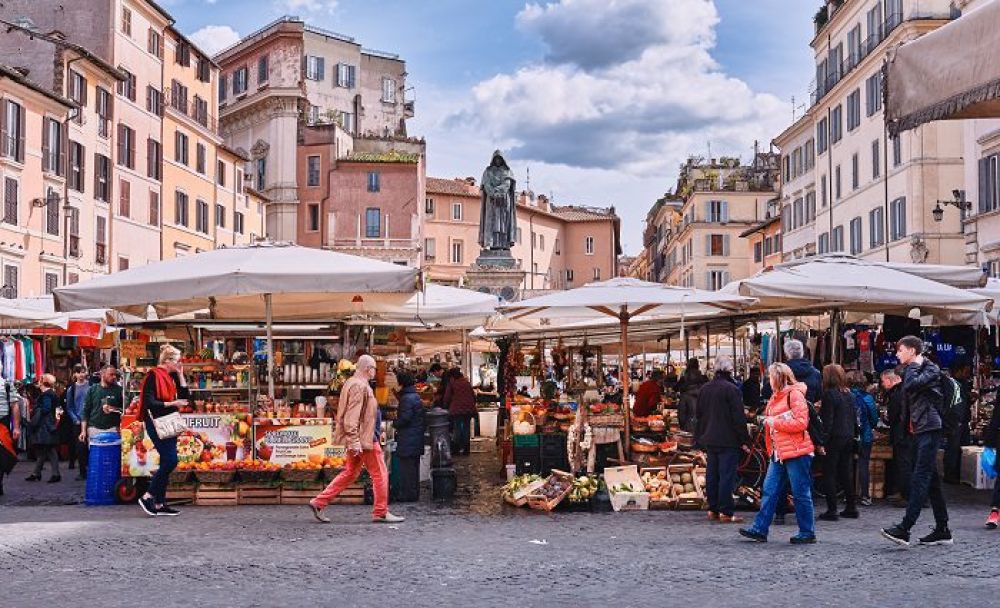

The bustling square known as Campo de' Fiori has long been a focal point for both locals and tourists in Rome. Its name, which translates to "Field of Flowers," hints at its past when the area was a meadow. The history of this famed piazza is as rich and varied as the city itself, with its role and character evolving through the centuries. Here is a peek into the transformation of Campo de' Fiori from its early days to a modern tourism hotspot.
The square's history dates back to the Middle Ages when it was a meadow. In the 15th century, the square was paved, and it has since played host to a variety of activities, including public executions. Notably, the philosopher Giordano Bruno was burnt at the stake for heresy here in 1600, and a statue commemorating him now commands the center of the square.
As Rome developed, Campo de' Fiori became a bustling hub of commercial and public life by the late medieval period. The square's market, which has been active for over 400 years, remains a colorful spectacle of daily life and a must-visit destination for tourists seeking authentic local experiences. Market stalls spill out under the Roman sun, offering everything from fresh produce and flowers to artisanal products and souvenirs.
During the 19th and 20th centuries, the increasing allure of Rome's historic charm, including sites like Campo de' Fiori, began drawing tourists from around the globe. The area around the square is rich with Renaissance buildings and churches, alongside cafes and restaurants that have been serving locals and visitors alike for generations. Tourism gradually became an essential part of the local economy.
Today, Campo de' Fiori embodies a mix of Rome's storied past and its cosmopolitan present. Mornings at the square are bustling with activity at the market, while evenings see a transformation into a lively social scene. In recent years, there has been a trend towards experiential tourism, where travelers seek authentic experiences. Cooking classes, market tours, and historical walks in Campo de' Fiori cater to this demand.
Furthermore, the rise of digital platforms and social media has made places like Campo de' Fiori even more accessible to tourists planning their itineraries. As travel becomes even more personalized and immersive, the square continues to offer a window into the Roman way of life, both past and present. Its vibrant atmosphere, seasoned with the aroma of fresh produce and the melodic chatter of vendors, continues to enchant visitors.
As the world emerges from the challenges of global travel constraints, tourism experts anticipate a resurgence in interest in historic destinations like Campo de' Fiori. Sustainable tourism also plays a role in shaping future travel, with increasing awareness about preserving the cultural and environmental integrity of places like this enigmatic Roman square. Rome, with its endless layers of history, continues to adapt, ensuring that Campo de' Fiori will remain a beloved spot for generations of travelers to come.
Whether it's the echoes of history, the allure of daily market life, or the charm of a Roman evening, Campo de' Fiori's tapestry of experiences continues to contribute richly to Rome's tourism story.